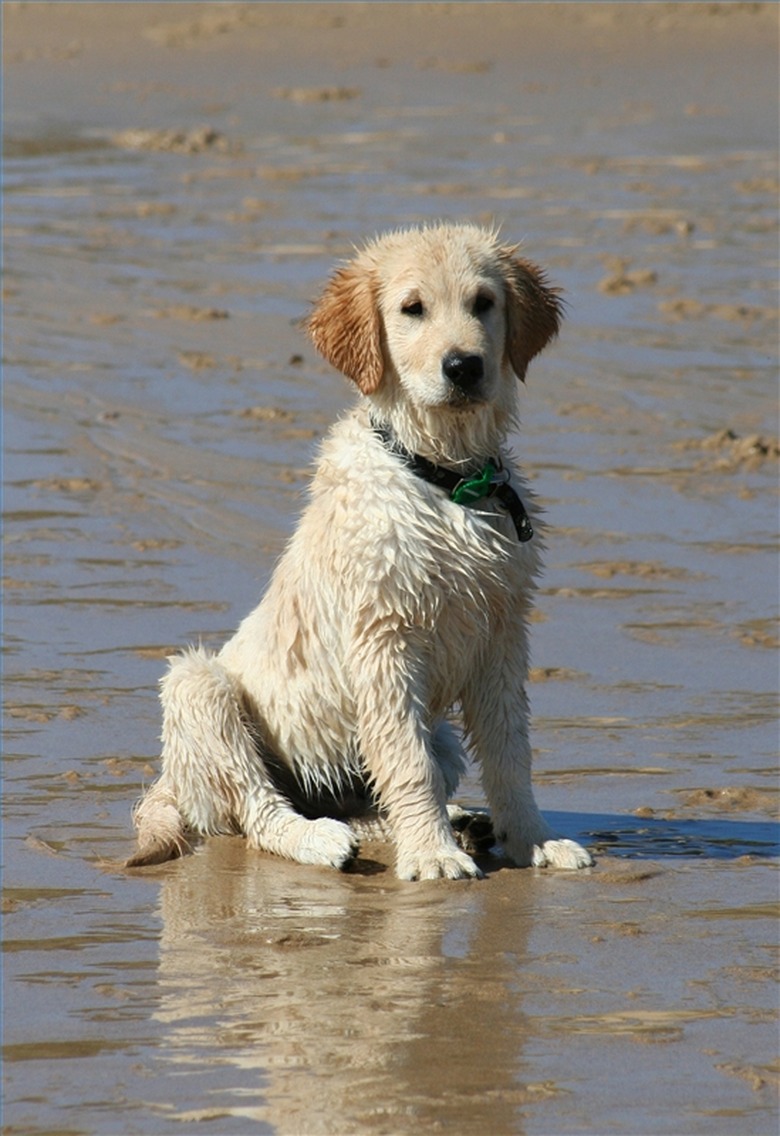About Mesenchymal Tumors In Dogs
Mesenchymal tumors appear on the skin and are the most common type of tumors in dogs. About a third of all tumors that occur in canines are mesenchymal. Most pose no threat to the dog; however, oftentimes tumors that may have the potential to become malignant are passed over as benign lesions.
Mesenchymal tumors form from the cells that surround the skin, such as cells in fat, connective tissues, blood vessels and nerves.
There are three types of mesenchymal tumors: Lipomas, fibrosarcomas and hemangiosarcomas.
Lipomas
Lipomas
Lipomas are benign, fatty growths. Older and overweight dogs are especially prone to lipomas, and most have at least one. Oftentimes, if a dog has one lipoma, it will have several. If your dog has such a growth, it is important to confirm that it is indeed a lipoma and not a more serious form of skin cancer.
Lipomas are firm but movable. They do not cause hair loss, pain or infection.
If your dog has a suspected lipoma, your veterinarian will likely palpate the growth, document its size and location, and recommend you keep a watch on it. If it were to begin growing quickly, the doctor might aspirate it or take a biopsy. The only time veterinarians are likely to treat a lipoma, usually with surgery, is if the tumor grows so large that it interferes with the dog's mobility.
Fibrosarcoma
Fibrosarcoma
Fibrosarcoma is a type of mesenchymal tumor that grows out of the connective tissues of the skull, spine, pelvis, ribs or other bone. It is locally aggressive and will spread to surrounding tissues; however, it is unlikely to metastasize to other parts of the body.
Fibrosarcomas are most common in older male dogs, and there is a specific type that occurs in the mouths of younger dogs.
This type of cancer is often treated with surgery or a combination of surgery and radiation. Chemotherapy is sometimes included in treatment.
Amputation may be necessary if the fibrosarcoma occurs on one of the dog's limbs.
Dermal Hemangiosarcoma
Dermal Hemangiosarcoma
Dermal hemangiosarcoma looks like a rosy red or black growth on the dog's skin. This type of cancer is often associated with sun exposure. It tends to occur on parts of the dog's body that are hairless or where the fur is thin, such as the abdomen or inner thin. Dalmatians, pit bull terriers, whippets and other breeds with short white hair are predisposed to this type of tumor.
About one-third of dermal hemangiosarcomas spread internally, making it important to remove the growth quickly.
Subcutaneous Hemangiosarcomas
Subcutaneous Hemangiosarcomas
Subcutaneous hemangiosarcomas can occur anywhere on the dog's body. The growth may appear as a soft mass or a firm lesion. These tumors are often discolored and/or ulcerated, and may look like a bruise. It may have developed in the location where it was found or spread from another part of the dog's body. The tumor will be surgically removed, followed by radiation and/or chemotherapy.
Home Exam
Home Exam
Veterinarians often recommend that you examine your dog each month for any type of growths on its skin. Separate the hair with your fingers and look closely at the skin. Feel for lumps or tumors. Look for areas of color change and areas that are scaly or crusty. Look for new growths or growths that have changed in color or size. If you find something unusual in your home examination, have your veterinarian examine your pet.
Always check with your veterinarian before changing your pet's diet, medication, or physical activity routines. This information is not a substitute for a vet's opinion.
